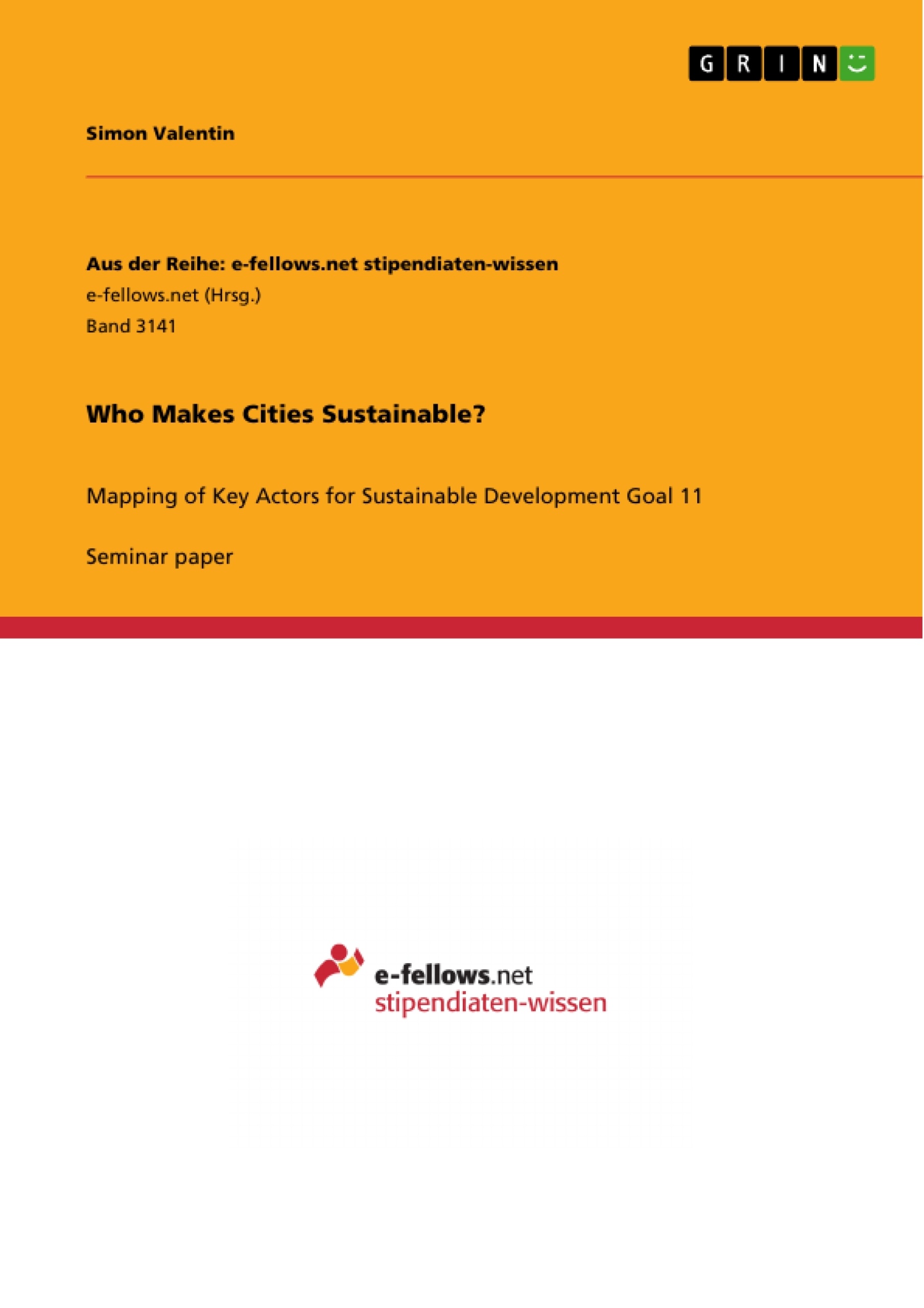Goal 11 of the Sustainable Development Goals (SDGs) is all about safe, resilient and sustainable cities. In this essay, I will identify and map the key actors that have a crucial influence in achieving movement on the Goal. Therefore, I will start in section two with a short introduction to the goal itself and the specific characteristics that determine which actors are relevant for it. In the third section, I will build up a framework based on different literature to identify and map the most important actors for Goal 11. In the following fourth section, I will use these results to take a closer look at four key actors and their possible contributions, before I will end with a conclusion.
Urbanization is one of the most important developments of human civilization in the 21st century. In the middle of the 20th century, 30 % of people lived in the urban centers of the world. Today, more than half of the world's population lives in cities, with an increase of up to 70 % expected by 2050. Cities are the main drivers of local and national economies and hubs of prosperity. More than 80 % of global economic activity is concentrated in cities. The speed and scale of urbanization, however, also pose enormous challenges. Widening income disparities, increasing ambient air pollution and aging infrastructure are only some of the signs that today's cities are struggling to keep pace with the growing number of urban dwellers and their dreams for a prosperous future.
Inhaltsverzeichnis (Table of Contents)
- Introduction
- SDG 11 and its characteristics
- Mapping of actors
- Stakeholder analysis
- Interest and power of the actors
- Analyses of key actors
Zielsetzung und Themenschwerpunkte (Objectives and Key Themes)
The essay analyzes the key actors involved in achieving Sustainable Development Goal (SDG) 11, which focuses on sustainable cities. It aims to identify and map these actors, analyze their power and influence, and assess their potential contributions to achieving the goal.
- Sustainable urban development
- Key actors in urban development
- Stakeholder analysis framework
- Interest and influence of actors
- Potential contributions of key actors
Zusammenfassung der Kapitel (Chapter Summaries)
- Introduction: This section provides a brief overview of SDG 11 and its focus on sustainable cities, outlining the essay's structure and objectives.
- SDG 11 and its characteristics: This section delves into the challenges and opportunities presented by rapid urbanization, highlighting the critical need for sustainable urban development strategies. It examines the goals and objectives of SDG 11, emphasizing its focus on inclusive, safe, resilient, and sustainable cities.
- Mapping of actors: This section introduces the framework for analyzing key actors in achieving SDG 11. It utilizes a stakeholder analysis approach, identifying actors across various sectors, including governments, businesses, communities, and other organizations.
Schlüsselwörter (Keywords)
The core focus of this essay is on sustainable urban development, stakeholder analysis, key actors, and their respective power and influence in achieving SDG 11, emphasizing the importance of inclusive and participatory approaches to address the challenges of urbanization.
- Quote paper
- Simon Valentin (Author), 2018, Who Makes Cities Sustainable?, Munich, GRIN Verlag, https://www.grin.com/document/491912



